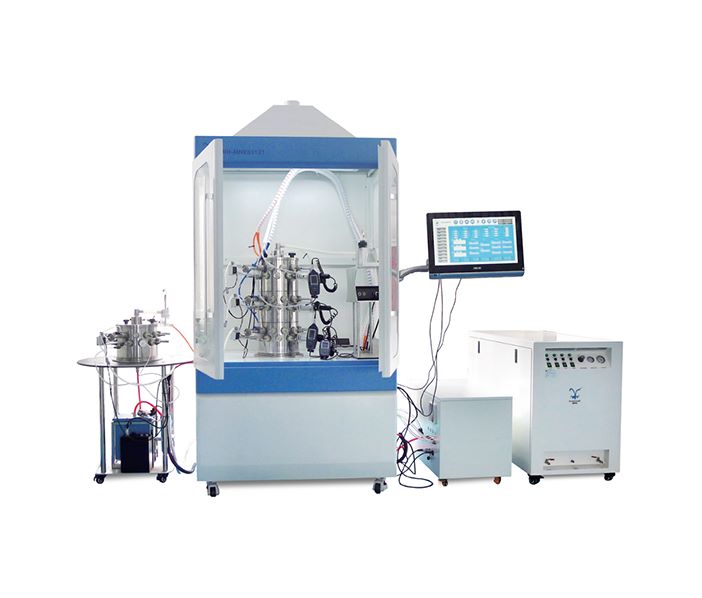Application
- Drug Safety Evaluation;
- Respiratory Disease Modeling and Drug Efficacy Evaluation;
- Chemicals and Pesticide Safety Evaluation;
- Hazard Assessment and Radioactive Substances Protection;
- Inhalation Immunity and Environment Assessment;
- Aerospace Medicine.
Description
The system is used to conduct nose-only inhalation toxicity tests for rodents, including multiple concentration bioaerosols, chemical aerosols and smoke, etc. It can ensure inhalation dose consistency of the same test group, realize online monitoring of aerosol concentration and real-time sampling, and achieve the leading level of exposure uniformity and stability through a high precision control system.
Features
- Realize inhalation exposure test of homologous gases, vapors or mixtures with 3 to 5 concentration gradients.
- Unique vortex mixing and dilution technology makes the concentration of inhalation test substances uniform and stable for all layers’ animals. The uniformity and stability deviation of each exposure port's mass concentration during tests for gas is within ±8%, for liquid aerosol is within ±10%, while for dust aerosol is within ±20%, which conforms to technical requirements of OECD inhalation guidelines.
- Negative pressure protection system can guarantee the safety of personnel.
- Space-saving, low energy consumption and sample consumption.
- Max. 5 times concentration gradient can be realized.
Standards
OECD Guidelines
① OECD TG 403 Acute Inhalation Toxicity (2009);
② OECD TG 436 Acute Inhalation Toxicity; Acute Toxic Class Method (2009);
③ OECD TG 412 28d Sub-acute inhalation (2018);
④ OECD TG 413 90d Sub-chronic inhalation (2018);
Pesticide Registration Standards
① GB /T 15670.6 ~2017 Toxicological test methods for pesticides registration—Part 6: Acute inhalation toxicity test;
② GB /T 15670.12 ~ 2017 Toxicological test methods for pesticides registration—Part 12: Short-term repeated dose 28-day inhalation toxicity study;
③ GB /T 15670.13 ~2017 Toxicological test methods for pesticides registration—Part 13: Subchronic toxicity study;
④ GB /T 15670.26 ~ 2017 Toxicological test methods for pesticides registration—Part 26: Chronic toxicity study;
Registration of New Chemical Substances by Ministry of Ecology and Environment
① 403 Acute Inhalation Toxicity(2013, 2nd edition);
② 436 Acute Inhalation Toxicity Test:Acute Toxic Class Method(2013, 2nd edition);
③ 412 Sub-acute inhalation:28-days test(2013, 2nd edition);
④ 413 Sub-chronic inhalation:90-days test(2013, 2nd edition);
bio-equip.cn
Beijing Huironghe Technology Co., Ltd. was founded in 2010 and is situated in the Beijing Economic and Technological Development Zone. As a national high-tech enterprise, the company is dedicated to developing, producing, and providing technical services for scientific research instruments and equipment related to inhalation toxicology, genetic toxicology, and aerosol detection. Its extensive portfolio of offerings includes cutting-edge products such as aerosol inhalation exposure equipment, fully automatic QuEChERS instruments, NGI, and respiratory simulators. With a steadfast commitment to technological innovation at its core, Huironghe strives to provide global customers with the most advanced and high-quality inhalation toxicology equipment and premium technical services, while continuously pushing the boundaries of research and development.

